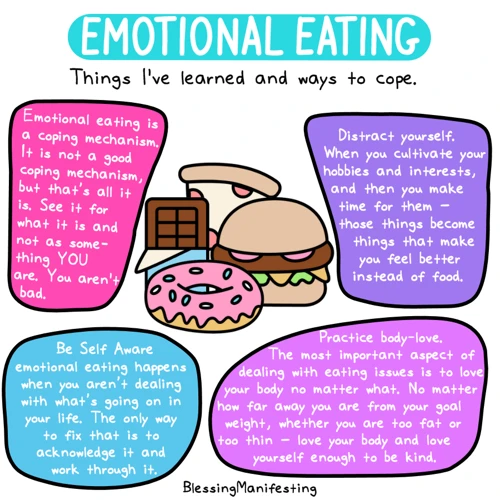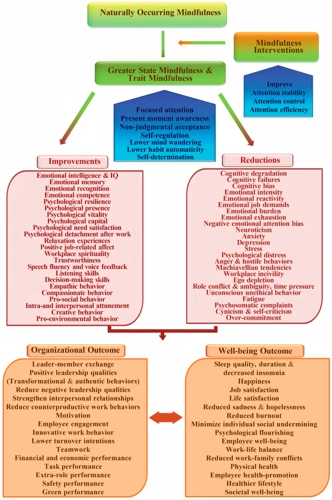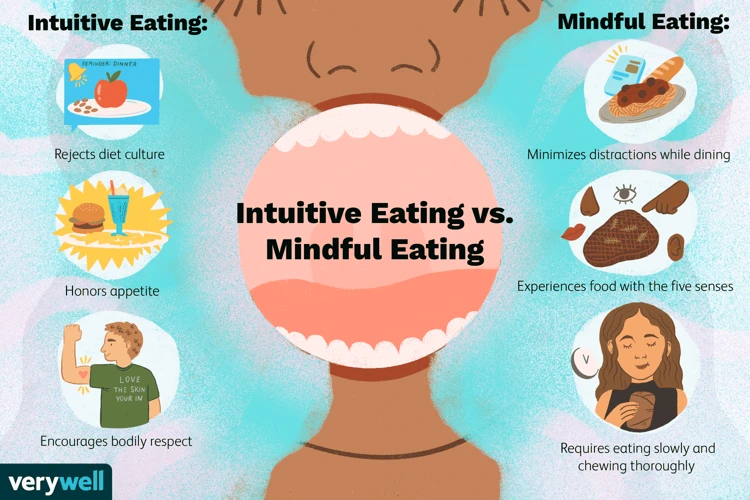Have you ever found yourself mindlessly reaching for a bag of chips or a pint of ice cream when you’re feeling stressed, sad, or anxious? Emotional eating is a common coping mechanism for dealing with difficult emotions, but it can quickly turn into a harmful habit. The good news is that there are effective ways to manage emotional eating, and practitioners have been turning to yoga and meditation for centuries as a way to calm the mind and cultivate a healthier relationship with food. In this article, we’ll explore the science behind emotional eating, the benefits of yoga and meditation for managing emotions, and practical strategies for incorporating these practices into your daily routine.
Understanding Emotional Eating

Many of us have experienced the feeling of reaching for food as a means of coping with negative emotions such as stress, boredom or anxiety. This type of eating is commonly referred to as emotional eating. While it may bring temporary comfort, emotional eating can lead to overeating and weight gain, ultimately further exacerbating the underlying emotional issues. To better understand this phenomenon and how to cope with it, let’s delve deeper into the science behind emotional eating and its potential negative consequences.
The Science Behind Emotional Eating
The Science Behind Emotional Eating
Emotional eating has been shown to be a complex behavior that is influenced by various factors. Here are some of the key scientific findings related to emotional eating:
- Neurotransmitters: Research has found that certain neurotransmitters in the brain, such as dopamine and serotonin, play a key role in regulating emotions and food cravings. When these neurotransmitters are imbalanced, it can lead to an increased desire for comfort foods and overeating.
- Hormones: Hormones like cortisol, known as the “stress hormone,” are released in response to stress and can also impact our food choices. Elevated cortisol levels have been linked to increased cravings for high-fat, high-sugar foods.
- Childhood experiences: Childhood experiences can also impact our relationship with food and emotions. Studies have found that individuals who experienced high levels of stress and adversity in childhood may be more likely to engage in emotional eating later in life.
- Pleasure response: When we eat comfort foods, the brain releases dopamine, which triggers feelings of pleasure and reward. This can create a cycle where we turn to food for comfort and mood regulation.
Emotional eating is a complex behavior that is influenced by biological, psychological, and environmental factors. However, through mindfulness practices like yoga and meditation, we can learn to manage our emotions and break the cycle of emotional eating.
The Dangers of Emotional Overeating
Emotional overeating can have serious consequences on both physical and mental health, leading to a vicious cycle that is difficult to break. Here are some of the dangers of emotional overeating:
- Weight gain: Overeating on a regular basis can lead to significant weight gain, which can increase the risk of developing obesity, heart disease, and diabetes.
- Poor body image: Constantly turning to food to cope with emotions can take a toll on how a person views themselves, affecting their self-esteem and body image.
- Emotional distress: Although overeating may provide temporary relief, it can actually exacerbate negative emotions in the long run, leading to increased feelings of guilt, shame, and anxiety.
- Unhealthy eating patterns: Emotional overeating often involves consuming foods that are high in calories, sugar, and fat. These foods may be comforting in the moment, but they do not provide the necessary nutrients for overall health and can lead to unhealthy eating habits.
- Chronic disease: As mentioned earlier, emotional overeating can increase the risk of developing chronic diseases such as diabetes and heart disease, which can have serious implications for overall health and well-being.
It’s important to recognize the negative impact emotional overeating can have on both physical and mental health. Developing healthier coping mechanisms, such as yoga and meditation, can help break the cycle of emotional overeating and promote overall health and wellness.
The Role of Yoga in Coping with Emotional Eating

When it comes to managing emotional eating, we often focus on what we eat and how much we eat. However, there is another powerful tool that can help us tackle the root cause of emotional eating: yoga. Research indicates that practicing yoga regularly can help moderate the stress response and manage emotions. By bringing mindfulness and awareness to our physical and emotional sensations, we can learn to differentiate between true hunger and emotional hunger, and respond to them in a way that promotes our overall wellbeing. In this section, we will explore the role of yoga in coping with emotional eating, and share some of the best yoga poses for calming the mind and curbing food cravings.
Yoga Poses for Curbing Emotional Eating
Yoga is a holistic practice that helps us connect our mind, body, and soul. It has been found to be effective in curbing emotional eating by reducing stress and improving our emotional and mental well-being. Here are some yoga poses that can help in managing emotional eating:
| Yoga Pose | Description |
|---|---|
| Child’s Pose (Balasana) | This pose can be very calming and soothing for the mind and body. It helps relieve stress and anxiety by elongating the lower back and relaxing the hips. |
| Tree Pose (Vrikshasana) | This pose helps to improve balance and focus. It helps to strengthen the legs and core muscles. It also helps to instill a sense of stability and calmness and releases tension in the body. |
| Warrior II (Virabhadrasana II) | This pose strengthens the legs, opens up the hips and chest, and improves focus and balance. It also helps to release tension and stress from the body. |
| Downward-Facing Dog (Adho Mukha Svanasana) | This pose helps to relieve stress and anxiety by allowing the head to hang freely and increasing blood flow to the brain. It also strengthens the arms, shoulders, and legs. |
| Bridge Pose (Setu Bandha Sarvangasana) | This pose helps to strengthen the back, legs, and core muscles. It also promotes deep relaxation and helps to reduce stress and anxiety by opening up the chest and shoulders. |
These yoga poses can be practiced regularly to reduce stress and emotional reactivity, which in turn helps to manage emotional eating.
The Benefits of Practicing Yoga for Managing Emotions
Practicing yoga is not just a physical exercise, it’s an effective tool for managing emotions as well. Regular yoga practice can offer numerous benefits for your emotional well-being. Here are some of the key benefits of practicing yoga for managing emotions:
- Reduced Stress: Stress is a major factor that contributes to emotional eating. Yoga practice can significantly reduce stress, which in turn can help to reduce emotional eating.
- Increased Self-awareness: Yoga involves paying attention to your body, breath, and thoughts. This increases your self-awareness and helps you to identify triggers for emotional eating.
- Improved Mood: Yoga practice has been shown to have a positive impact on mood. It can help to alleviate symptoms of depression and anxiety, two common emotional triggers for overeating.
- Greater Mindfulness: Yoga practice fosters mindfulness, which is the ability to stay present in the moment. When you’re mindful, you’re less likely to give in to cravings or engage in mindless eating habits.
- Better Sleep: Poor sleep can contribute to emotional eating. Yoga can help to improve sleep quality, which can reduce the likelihood of overeating due to lack of rest.
- Enhanced Self-esteem: Practicing yoga can improve your body image and self-esteem. When you feel better about yourself, you’re less likely to engage in emotional eating as a coping mechanism.
Incorporating yoga into your daily routine can be an effective strategy for managing emotions and reducing emotional eating.
The Role of Meditation in Coping With Emotional Eating

As we delve deeper into how to cope with emotional eating, another effective tool in our arsenal is meditation. Meditation is a practice that has been used for centuries to calm the mind, reduce stress and anxiety, and promote inner peace. Through the power of focused breathing and self-awareness, meditation can help break the cycle of emotional eating by addressing the root causes of our cravings and transforming the way we relate to food. Let’s explore the ways in which meditation can help us overcome the patterns of emotional overeating, and the techniques to get started on a mindful meditation practice.
Meditation Techniques to Conquer Emotional Eating
Meditation is a powerful tool to conquer emotional eating. Here are some techniques that can help:
| Meditation Technique | Description |
|---|---|
| Mindful Eating Meditation | This meditation involves paying attention to the present moment while eating. You focus on the food’s texture, taste, and smell. It aids in the experience of enjoying each bite and cultivating awareness of when you are full. |
| Body Scan Meditation | This mindfulness technique helps to recognize the physical sensations of hunger and fullness in the body. Start at the top of your head and move your attention gradually down throughout your body. Take the time to sense each part’s feelings, encourage yourself to breathe calmly despite the thoughts or sensations come to mind. |
| Loving Kindness Meditation | This practice comprises sending positive intentions of unconditional love, joy, and compassion to yourself, others, even your negative feelings. Directed toward yourself, this meditation could assist you in feeling more love and acceptance for the body you have today. It helps to get rid off self-criticism and build positive self-relationship and understanding. |
Remember that these techniques take practice, so try each one for at least five minutes every day. Over time, you will discover which ones work well for you and add them to your daily routine.
The Proven Impact of Meditation on Food Cravings
Meditation has been proven to have a positive impact on food cravings, and can be a useful tool in managing emotional eating. Research has shown that meditation can reduce the intensity of cravings and make them easier to manage. By increasing our self-awareness and ability to monitor our thoughts and feelings, we can better understand the causes of our cravings and develop strategies to overcome them.
One study found that participants who practiced mindfulness meditation for just six weeks experienced a significant decrease in their cravings for unhealthy foods. This was due to changes in the brain that resulted from meditation, as it helps to strengthen the parts of the brain responsible for self-control and decision-making.
Another study found that when individuals practiced meditation regularly, they were better able to recognize their cravings as temporary and fleeting experiences, rather than giving into them impulsively. This allowed them to make healthier choices and avoid overeating.
By using meditation techniques such as visualization, deep breathing, and body scans, we can learn to identify and manage our cravings in a more productive way. We can also use these techniques to manage our emotions, which are often closely linked to our food cravings.
Incorporating meditation into our daily routine can be a valuable tool in managing emotional eating and reducing food cravings. By developing our self-awareness and building our ability to control our thoughts and feelings, we can make healthier choices and lead a more balanced and fulfilling life.
Other Mindful Practices for Managing Hunger and Cravings

As we have discovered, emotional overeating is a complex issue that can have severe consequences on our overall health and well-being. While yoga and meditation are excellent coping mechanisms for managing emotions and reducing stress, there are other mindful practices that can also be incorporated into our daily lives to help curb hunger and control cravings. These practices focus on developing a more mindful relationship with food and our bodies, as well as improving our overall health through proper nutrition and regular physical activity. Let’s explore some of these practices and how they can be integrated into our daily routines.
Healthy Eating Strategies
In addition to practicing yoga and meditation, incorporating healthy eating strategies into your daily routine can also help in managing emotional eating. Here are some tips to keep in mind:
- Eat nutrient-dense foods: Adding more fruits, vegetables, lean proteins, and healthy fats to your diet can help you feel fuller for longer periods of time and curb cravings.
- Avoid restriction: It’s important to avoid strict diets or denying yourself certain foods, as this can lead to binging or overindulging. Instead, practice moderation and portion control.
- Listen to your body: Pay attention to your hunger and fullness cues. Eat when you are hungry and stop when you are full.
- Stay hydrated: Drinking enough water throughout the day can help you feel full and satisfied.
- Practice mindful eating: Take your time when eating, savor each bite, and pay attention to the flavors, textures, and smells of your food.
- Avoid emotional triggers: Identify the emotions or situations that trigger your emotional eating, and find alternative ways to cope with these feelings.
- Plan ahead: Plan your meals and snacks ahead of time, and keep healthy options readily available.
- Seek support: Reach out to friends, family, or a professional for support and accountability in your journey towards healthier eating habits.
Remember that healthy eating is not about perfection, but about making positive changes that work for you and your lifestyle. By incorporating these strategies into your daily routine, you can start to take control of your emotional eating habits and live a healthier, more balanced life.
Mindful Breathing Exercises
One effective way to combat emotional eating is through practicing mindfulness techniques, such as mindful breathing exercises. By bringing awareness to the present moment and focusing on the breath, we can cultivate a sense of calm and reduce stress, ultimately decreasing the likelihood of turning to food to cope with difficult emotions.
Here are a few examples of mindful breathing exercises that can be practiced anywhere, anytime:
| Breathing Exercise | Description |
|---|---|
| 4-7-8 Breathing | Breathe in for 4 seconds, hold for 7 seconds, and exhale for 8 seconds. Repeat for several rounds. |
| Belly Breathing | Place one hand on the belly and one hand on the chest. Breathe in deeply through the nose, letting the belly rise. Exhale slowly through the mouth, feeling the belly lower. Repeat for several breaths. |
| Box Breathing | Breathe in for 4 seconds, hold for 4 seconds, exhale for 4 seconds, and hold for 4 seconds before beginning the next round. Repeat for several cycles. |
Incorporating these mindful breathing exercises into your daily life can help you become more attuned to your body and emotions, and can serve as a valuable tool for managing cravings and avoiding emotional overeating.
The Power of Journaling
One powerful tool for managing emotional eating that is often overlooked is journaling. Journaling can help individuals gain insight into their emotions and behaviors and identify patterns that lead to overeating.
Here are some tips for effective journaling:
- Find a quiet space. Set aside at least 10 minutes each day to focus on journaling in a quiet, distraction-free location.
- Reflect on emotions. Write down how you feel before and after meals. This can help individuals identify emotional triggers that lead to overeating.
- Document food intake. Keeping a record of what and when you eat, as well as how hungry you are, can help individuals become more aware of their eating habits.
- Identify patterns. Review your journal entries regularly to identify patterns of emotional eating.
- Track progress. Celebrate successes and track progress towards personal goals.
Journaling can be an effective tool for managing emotional eating because it helps to bring awareness to behaviors and emotions that may otherwise go unnoticed. By reflecting on emotions and food choices, individuals can identify patterns, triggers, and form strategies to develop healthier habits.
Tips and Tricks to Incorporate Yoga and Meditation into Your Daily Life
Now that we understand the benefits of yoga and meditation in managing emotional eating, it’s important to explore ways to incorporate these practices into our daily lives. However, in a world filled with distractions and obligations, finding the time and commitment to develop a regular yoga and meditation routine may seem daunting. Fear not, there are various tips and tricks that can help us weave these practices into our busy lives, making them more accessible and sustainable. Let’s explore some practical ways to make yoga and meditation a part of our daily routines.
Creating a Consistent Routine
Establishing a consistent routine is essential for achieving success in incorporating yoga and meditation into your daily life. It is crucial to make a concerted effort to set aside dedicated time for your practice each day.
The following table outlines some tips for creating a consistent routine:
| TIP #1 | Choose a time that works best for you. Whether it’s early in the morning or late at night, scheduling a consistent time for your practice ensures that it becomes a regular part of your day. |
| TIP #2 | Create a designated space for your practice. This could be a part of your bedroom or living room that is free from distractions and promotes relaxation. |
| TIP #3 | Start small and work your way up. It’s better to commit to a short daily practice rather than a longer one that may feel overwhelming and unsustainable. |
| TIP #4 | Make it a priority. Prioritizing your practice and understanding its importance in your overall well-being can help you stay motivated and committed to your routine. |
| TIP #5 | Track your progress. Keeping a journal or using a meditation app to track your practice can help you stay accountable and motivated. |
By implementing these tips, creating a consistent routine for your yoga and meditation practice can become an integral part of your daily life. It is essential to remember that consistency is key and that your commitment to your practice will lead to long-lasting benefits for your physical and emotional health.
Setting Realistic Goals
Setting Realistic Goals:
When it comes to incorporating yoga and meditation into your daily routine, it’s important to set realistic goals for yourself. Trying to make drastic changes all at once can feel overwhelming and ultimately lead to giving up altogether. Instead, take small steps and gradually work your way up to more regular and longer practice sessions.
Here are some tips for setting realistic goals for yourself:
| Tip | Explanation |
|---|---|
| Start small | Instead of committing to an hour-long practice every day, start with just 10 minutes of meditation or yoga each day and gradually increase the length of your sessions as you become more comfortable and confident. |
| Be consistent | Even if you can only spare a few minutes each day, make sure to practice consistently. This will help you develop a habit and make it easier to commit to longer practice sessions in the future. |
| Be flexible | Life can be unpredictable, so it’s important to be flexible with your practice schedule. If you miss a day, don’t beat yourself up about it. Simply recommit to practicing the next day and move forward from there. |
| Set realistic expectations | Remember that progress takes time, so don’t expect to see overnight results. Be patient with yourself and stay positive. Celebrate small wins and use them as motivation to keep going. |
| Find a support system | Whether it’s a friend, family member, or online community, find people who support your goals and can help keep you accountable. Share your progress with them and lean on them for support when you need it. |
By setting realistic goals for yourself and following these tips, you can successfully incorporate yoga and meditation into your daily routine and use these powerful tools to manage emotional eating and improve your overall well-being.
Conclusion
In conclusion, managing emotional eating is an ongoing process that requires mindfulness and patience. While it may be tempting to resort to unhealthy eating habits as a coping mechanism, incorporating practices such as yoga and meditation can greatly help in managing emotions and curbing food cravings.
Understanding the science behind emotional eating can provide valuable insights into the detrimental effects it can have on one’s mental and physical health. It is important to recognize the signs and dangers of emotional overeating and reach out for support if necessary.
Through the practice of yoga, individuals can learn to regulate their emotions and curb food cravings. Incorporating poses specifically targeting emotional eating can provide a sense of empowerment and control over one’s cravings. In addition, regularly practicing yoga can lead to improved mental health and a greater sense of overall wellbeing.
Meditation serves as another powerful tool in managing emotional eating. Through mindfulness techniques, individuals can gain a deeper understanding of their emotional states and learn to approach them with calmness and clarity. This, in turn, can help manage food cravings and prevent overeating.
Other mindful practices such as healthy eating strategies, mindful breathing exercises, and journaling can also contribute to a holistic approach to managing emotional eating.
Finally, incorporating yoga and meditation into one’s daily routine can be a challenging task, but setting realistic goals and creating a consistent routine can greatly increase the chances of success. With time and consistent practice, individuals can gain control over their emotions and develop a healthier relationship with food.
Overall, yoga and meditation serve as powerful coping mechanisms for managing emotional eating. By incorporating these practices into your daily life, you can gain a greater sense of control over your emotions and food cravings, leading to improved mental and physical health. Remember to approach this process with mindfulness, patience, and self-compassion.
Frequently Asked Questions
What is emotional eating?
Emotional eating is when someone turns to food for comfort or as a coping mechanism for dealing with negative emotions such as stress, anxiety, or depression.
How does yoga help with emotional eating?
Yoga helps with emotional eating by reducing stress and anxiety levels, increasing body awareness, and improving self-esteem and self-control.
Which yoga poses are best for curbing emotional eating?
Yoga poses such as the tree pose, warrior pose, and boat pose are effective in curbing emotional eating as they help strengthen the core and promote mindfulness and body awareness.
Can mindfulness meditation help with food cravings?
Yes, mindfulness meditation can help manage food cravings. By practicing mindfulness, one can develop the ability to observe their thoughts and emotions without judgment, which can reduce the urge to give in to food cravings.
How does journaling help with emotional eating?
Journaling can help individuals identify their triggers for emotional eating, process their feelings in a healthy way, and make a plan to cope with negative emotions without resorting to food.
Is it possible to incorporate yoga and meditation into a busy lifestyle?
Yes, it is possible to incorporate yoga and meditation into a busy lifestyle. Even just a few minutes of meditation or a quick yoga sequence can have a significant impact on stress levels and emotional well-being.
Can practicing mindfulness improve overall well-being?
Yes, practicing mindfulness has been shown to improve overall well-being by reducing stress, anxiety, and symptoms of depression, and promoting healthy coping mechanisms.
How does deep breathing exercises help with emotional eating?
Deep breathing exercises can help reduce stress, which is a common trigger for emotional eating. By practicing deep breathing, individuals can calm their nervous system and lower their stress levels, reducing the urge to turn to food for comfort.
How long does it take to see the benefits of practicing yoga and meditation?
The benefits of practicing yoga and meditation can vary from person to person, but some individuals may start noticing improvements in their emotional well-being within a few weeks of consistent practice.
Is it necessary to have prior experience in yoga or meditation to benefit from them?
No, prior experience is not necessary to benefit from yoga or meditation. There are many beginner-friendly resources available online or in-person, and even a few minutes of practice can have a positive impact on emotional well-being.







